When choosing fans for your case, you may have come across these two terms: static pressure and airflow. They represent the two different types of fans based on how they work.
But what benefits do you get from using one over the other?
In a nutshell, one is good for large cases, while the other shines with miniature ones.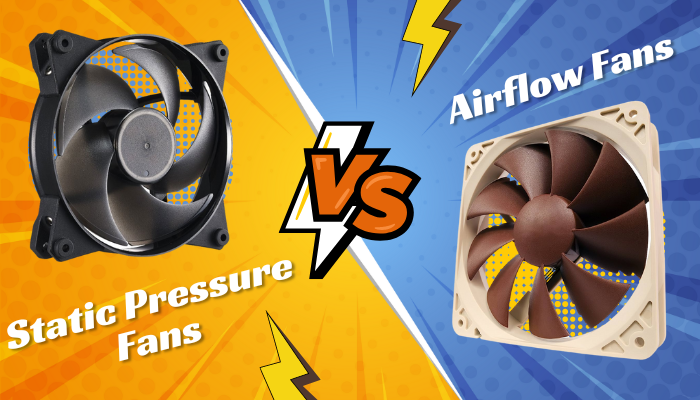
Want to dive deeper and learn more about them? Then, this article is perfect for you. I will explain their inner workings in great detail right in this piece.
What is Airflow and Static Pressure?
Airflow is associated with the volume of air your fan can move. The more the fan can move air, the better. Whereas static pressure indicates how much force a fan can use to move out air. Here speed is not important, but the brute force with which a fan can push air through small spaces.
Let’s take a more detailed look at them now.
Think of a fan pushing out hot air from the back of your case. To facilitate this, you would keep the case free from any obstruction preventing the air’s movement nearby.
If you use CPU air cooling for your system and want to prioritize airflow in your case, you need empty spaces in your case. This is so that the fans can move out as much air as possible. The fans also need to spin at high speeds. That’s why there are more blades in the airflow fan to achieve this.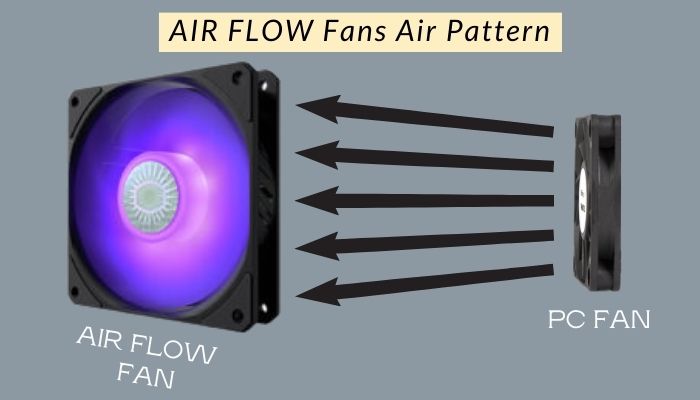
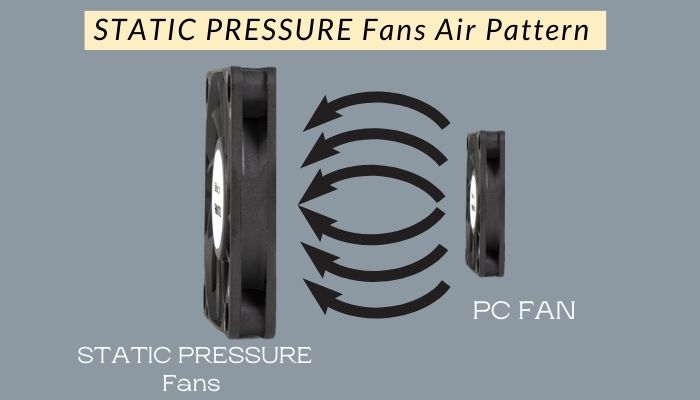
Static pressure, however, refers to the maximum pressure that a fan creates when its outlet is completely blocked.
This scenario will help you understand how they work. You have a mini ITX case, and it is in a cramped space. There is no way hot air can ventilate out of the case.
A static pressure fan works by pushing air out at a high force. The airflow speed may not be that high, but it can really squeeze the air out of the tight spots. Think of a heatsink with tiny fins, radiators, or a dust filter in front of the case. Static pressure fans are designed to work against any resistance that stands in their way and move out the hot air that is building up inside.
You can identify the Airflow by looking at a particular fan’s cfm (cubic feet per meter) values. The more this value, the better the air movement through your case. Static pressure is denoted in mm H2O. A higher value means a more capable fan optimized for a particular use case in both cases.
When to Buy a Static Pressure Vs. An Airflow Fan?
Airflow fans tend to move out air in a steady stream. On the other hand, a static pressure fan blows the air out in a random fashion. That is why many people use a combination of both these fans in their case.
You may plan the airflow route in your case depending on its form factor. But I use a simple rule: airflow fans are there for exhausts, and high static pressure fans for any heatsinks or CPU cooler that I have.
High static pressure fans are ideal for small cases or those having a small mesh. Also, if you have a dust filter installed, then a static fan is very important to place next to it.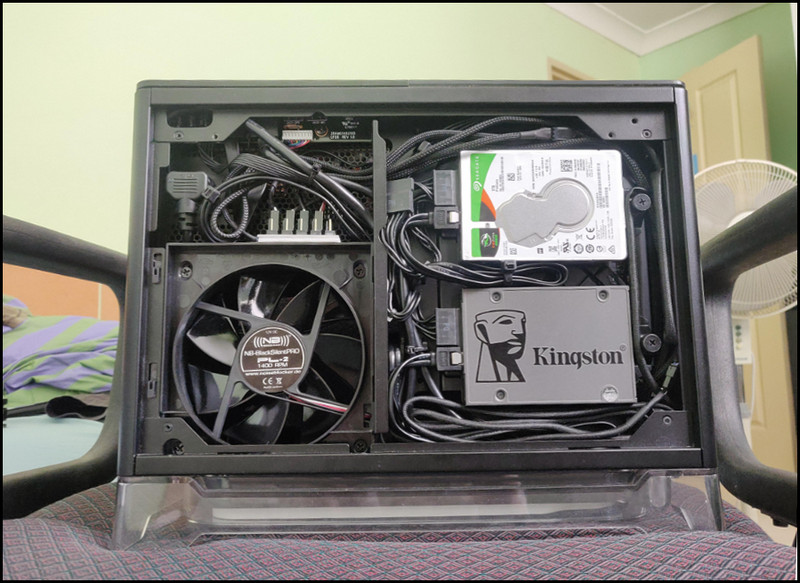
You can use them with CPU heatsinks and closed-loop liquid cooling radiators. If you have a case with hard drive bays in the front, these are ideal candidates for those cases too. Use high static pressure fans where the air is blocked and has no way to move out.
When you have a nice airflow stream around your PC, getting a high-airflow fan makes sense.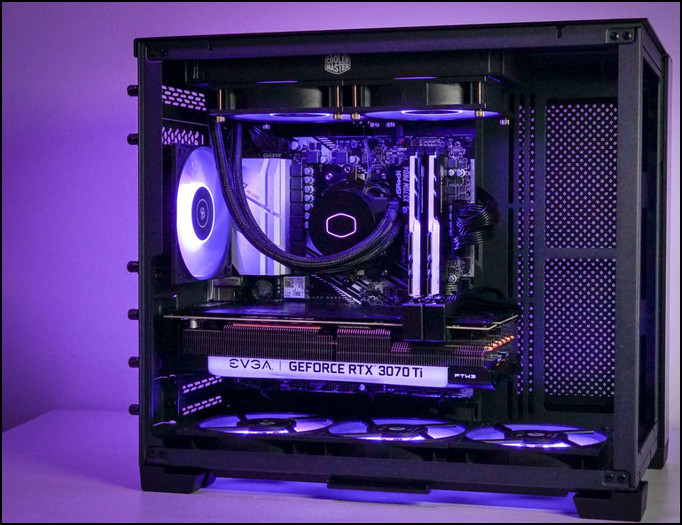
Large ATX cases are ideal candidates for airflow fans. With a spacious case, you can use these fans as air intake and exhaust. This will ensure the hot air never builds up inside your case and the temperatures of the components remain at normal levels.
How to Identify a Static Fan From an Airflow Fan
Both types of fans are very similar externally. Unless you take a glance over the packaging, you may not be able to differentiate one from the other.
This is how you can identify a static fan from an airflow fan:
A static pressure fan will have fewer blades than an airflow one. The blades are large and pretty close to one another. This prevents any air from moving backward when they experience an obstruction.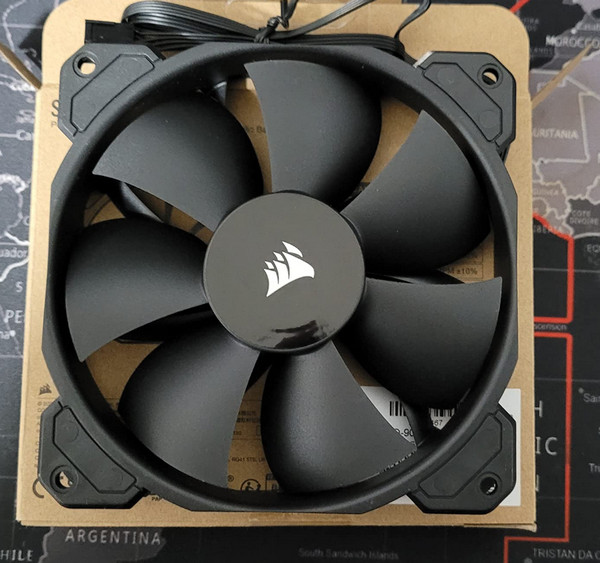
Fans optimized for airflow will have smaller blades but are larger in number. They will also be far apart to facilitate moving the air through them. They are quite small and have patterns on their blades.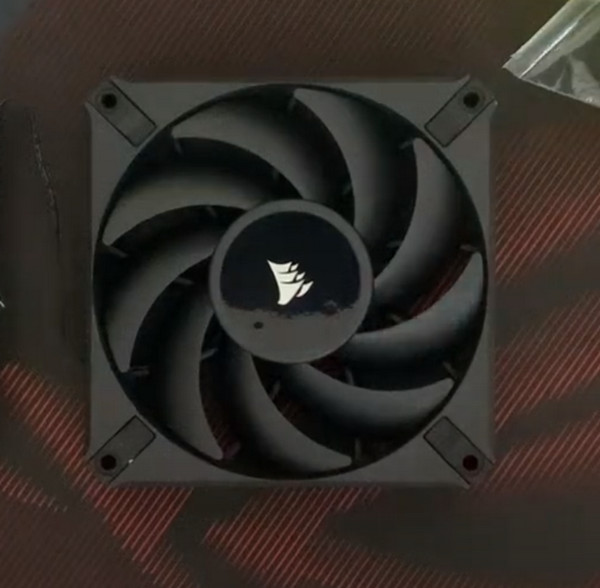
Frequently Asked Questions
Is airflow better than static pressure?
If your PC does not have a ton of airflow next to it, then a fan optimized for static pressure will serve you better. These are also great for cooling heatsinks and radiators.
Are static pressure fans louder?
Normally you would assume that a high static pressure fan will be loud. But manufacturers design this specifically so that they cut down on noise while removing heat efficiently.
Does static pressure change with fan speed?
Static pressure depends on the speed of a fan’s rotation. So, if you double the speed, the static pressure is quadrupled.
Can I use static pressure fans as case fans?
Yes, you can if you have a small case with minimal airflow. But if the case is large and there are large spaces inside, you are better off with an airflow fan that can move warm air from inside the case at a faster rate.
Over to You
Now that you know the differences between the two types of fans, it is up to you to decide which one you would go for. That will mainly depend on the size of your PC’s case and the airflow around it.
That’s all the info we have to uncover for today. Hope you had a great time going through it.
Do comment below and let us know the arrangement of fans that you went with.




